Hoi An Travel Tips: All for First-Time Travelers
Nestled in the heart of Vietnam’s central coast, Hoi An is a captivating ancient town that has earned UNESCO World Heritage status for its remarkably preserved architecture and vibrant living culture. With its charming streets lined with centuries-old houses, alluring lantern shops, and delectable cuisine, Hoi An offers an unforgettable journey into the past and the present. For first-time travelers, this comprehensive guide will help you plan your Hoi An adventure. Let’s explore Hoi An Travel Tips with Vietnam Motorcycle Tours Club through the article below.
Where is Hoi An, Vietnam?
Hoi An is situated in Quang Nam Province, approximately 30 kilometers south of the bustling city of Da Nang. Nestled on the banks of the Thu Bon River, Hoi An played a pivotal role in Southeast Asian trade during the 15th to 19th centuries. Its strategic location at the mouth of the river allowed for the flourishing of commercial activities with Chinese, Japanese, and Western merchants.
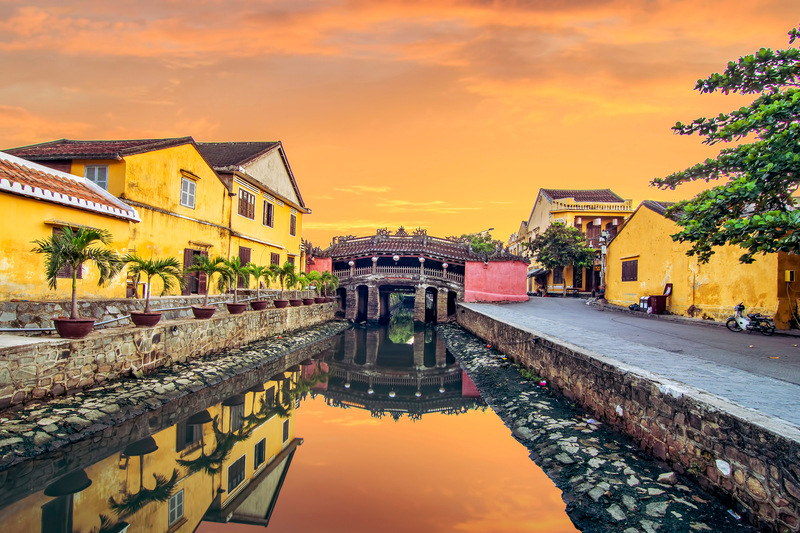
How is the Weather in Hoi An? When is the Best Time to Visit Hoi An?
Dry Season (February to August) – Hoi An Travel Tips
The dry season brings warm and sunny weather to Hoi An, making it an ideal time for outdoor activities and sightseeing. The average temperature during this season ranges from 25 to 35 degrees Celsius (77 to 95 degrees Fahrenheit). The humidity is relatively low, making it comfortable to explore the town.
This period is considered the peak tourist season, so you can expect higher prices and larger crowds, especially during the months of March, April, and May. However, the dry weather allows for better exploration of Hoi An’s attractions and nearby destinations.
Advantages of Visiting During the Dry Season:
- Ideal weather for outdoor activities and sightseeing
- Clear skies and sunny days perfect for photography
- Comfortable temperatures for walking and cycling around the town
Disadvantages of Visiting During the Dry Season:
- Higher prices for accommodation and flights
- Larger crowds and more tourists, especially during peak months
- Some attractions or activities may be more crowded or have longer queues
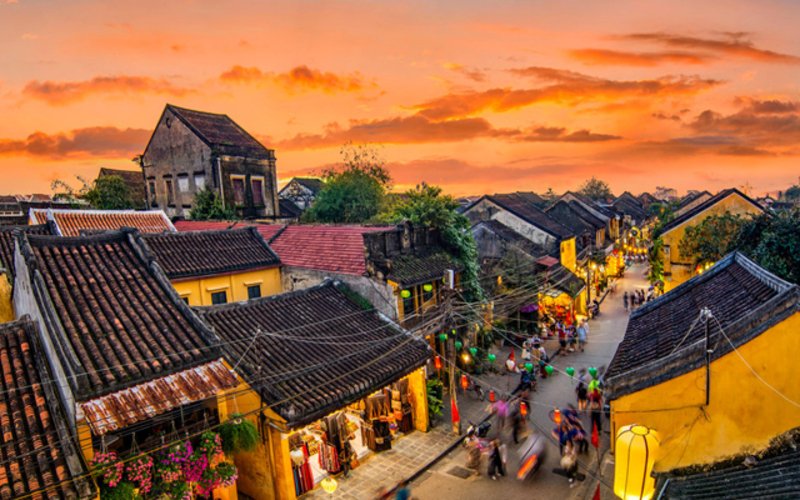
Rainy Season (From September to the end of January)
The rainy season in Hoi An typically lasts from September to January. During this period, the town experiences heavy rainfall, high humidity, and occasional storms. The average temperature ranges from 20 to 30 degrees Celsius (68 to 86 degrees Fahrenheit).
While the rainy season may not be the most appealing time for outdoor activities, it offers several advantages, such as fewer tourists and lower prices. Additionally, the lush greenery and occasional showers can add a unique charm to the town’s atmosphere.
Advantages of Visiting During the Rainy Season:
- Lower prices for accommodation and flights
- Fewer tourists and less crowded attractions
- Lush greenery and occasional showers can create a unique ambiance
Disadvantages of Visiting During the Rainy Season:
- High humidity and frequent rainfall, potentially disrupting outdoor activities
- Some attractions or tours may be closed or have limited operations
- Increased risk of storms or typhoons, which can affect travel plans
Ultimately, the best time to visit Hoi An depends on your personal preferences and travel goals. If you prefer drier weather and don’t mind larger crowds, the dry season (February to August) may be the ideal choice. However, if you’re looking for fewer tourists and lower prices, the rainy season (September to January) could be a suitable option, as long as you’re prepared for occasional showers and potential weather disruptions.
Transportation for your Hoi An Trip
Arrive in Hoi An, Vietnam
Hoi An is easily accessible from various transportation hubs in Vietnam. Here are some common ways to reach the town:
- By Air: The nearest international airport is Da Nang International Airport (DAD), located approximately 30 kilometers (18 miles) from Hoi An. You can take a taxi, private transfer, or shuttle bus from the airport to Hoi An, which typically takes around 45 minutes to an hour, depending on traffic.
- By Train: Hoi An does not have a direct train station. The closest major train station is in Da Nang. From there, you can take a taxi, bus, or private transfer to Hoi An, which will take approximately 1 hour.
- By Bus: Several bus companies operate services from major cities like Hanoi, Ho Chi Minh City, Nha Trang, and Hue to Hoi An. Bus travel can be a cost-effective option, but the journey may be longer and less comfortable than other modes of transportation.

Moving in Hoi An
Once you’ve arrived in Hoi An, getting around the town is relatively easy and convenient. Here are some popular options:
- Walking: Hoi An’s ancient town is compact and pedestrian-friendly, making walking an excellent way to explore the charming streets, shops, and attractions. Most of the town’s highlights are within a walkable distance.
- Cycling: Renting a bicycle is a popular and eco-friendly way to navigate Hoi An. Many hotels and guesthouses offer bike rentals, and there are also numerous rental shops throughout the town.
- Motorbike/Scooter: For longer distances or reaching nearby destinations like the beaches or countryside, renting a motorbike or scooter can be a convenient option. However, be cautious when riding in Hoi An’s narrow streets and alleys.
- Taxi/Grab: Taxis and ride-hailing services like Grab are readily available in Hoi An. They can be a convenient choice for longer journeys or if you prefer not to walk or cycle.
- Cyclo (Pedicab): For a more traditional and leisurely experience, you can hire a cyclo (pedicab) to take you around the town. Cyclo drivers can be found throughout Hoi An’s streets and are a popular way to experience the town’s charm.
Remember to always be cautious when navigating the streets of Hoi An, as traffic can be busy and chaotic at times.
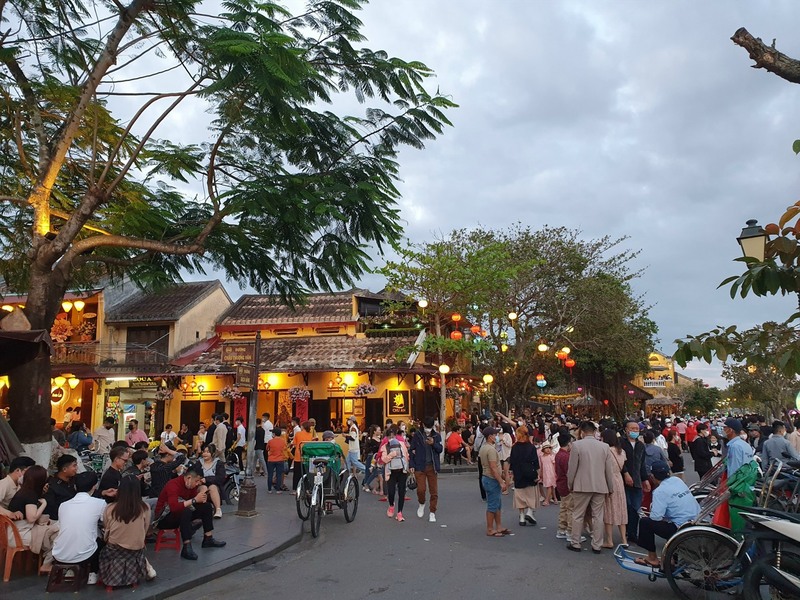
What to Do in Hoi An Ancient Town Center?
Hoi An’s Ancient Town is a UNESCO World Heritage Site and the heart of the town’s cultural and historical attractions. Here are some must-visit spots and activities:
Visit Some Cultural Halls
Hoi An is home to several well-preserved cultural halls that offer a glimpse into the town’s rich history and architectural heritage.
- Assembly Hall of the Cantonese Chinese Congregation: This impressive hall, built in the 19th century, features intricate woodcarvings, ceramic ornaments, and a beautiful courtyard.
- Assembly Hall of the Fukian Chinese Congregation: This hall, constructed in the early 17th century, showcases impressive architecture and serves as a gathering place for the Fukian Chinese community.
- Japanese Covered Bridge: The iconic Japanese Covered Bridge, built in the 16th century, is a symbol of Hoi An and a testament to the town’s multicultural heritage. Don’t forget to take a stroll across the bridge and admire the intricate carvings and statues.
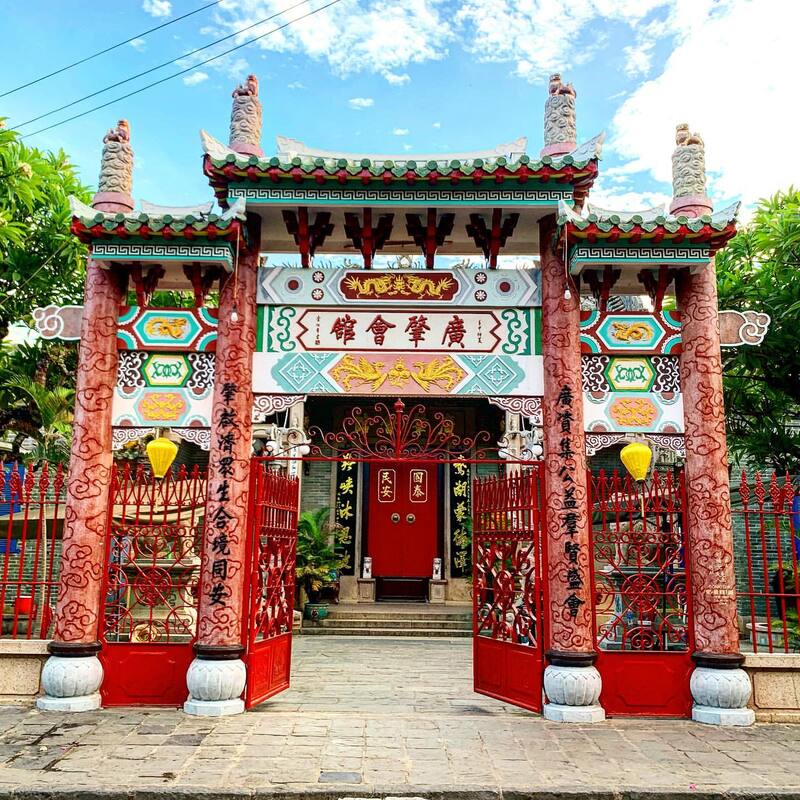
Explore Ancient House Architecture
Hoi An is renowned for its well-preserved ancient houses, many of which date back to the 17th and 18th centuries. These houses offer a glimpse into the lives of wealthy merchants and provide insight into traditional Vietnamese architecture.
- Tan Ky House: This beautiful ancient house features intricate woodcarvings, a Japanese-style courtyard, and a stunning interior design.
- Trieu Phat Loc House: Built in the 18th century, this house showcases a unique blend of Vietnamese and Chinese architectural styles.
- Duc An Old House: This impressive house, constructed in the early 19th century, features a beautiful courtyard and serves as a museum showcasing traditional Vietnamese lifestyle and customs.
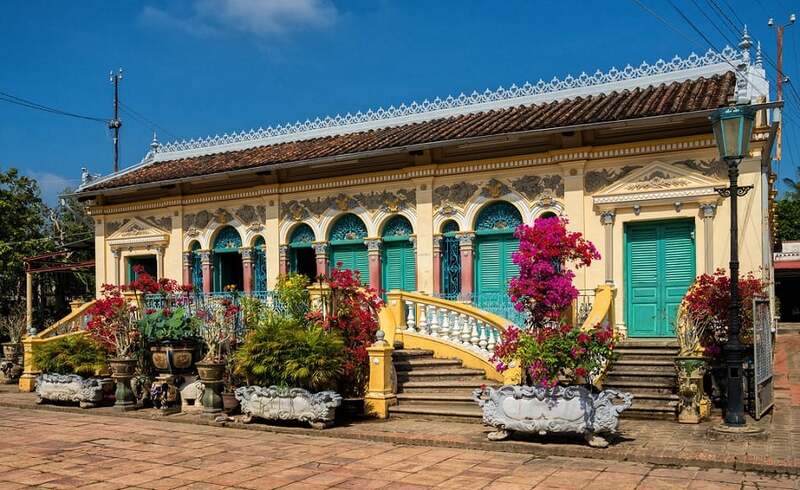
Taking Photos at the Japanese Bridge in Hoi An
No visit to Hoi An is complete without capturing the iconic Japanese Covered Bridge. This picturesque bridge, adorned with intricate carvings and statues, is a photographer’s dream.
- For the best photos, visit the bridge during the early morning or late afternoon when the light is softer and more flattering.
- Consider incorporating the surrounding buildings and streets into your compositions for a more authentic Hoi An experience.
- During the evenings, the bridge is beautifully illuminated by lanterns, creating a romantic and atmospheric setting for night photography.
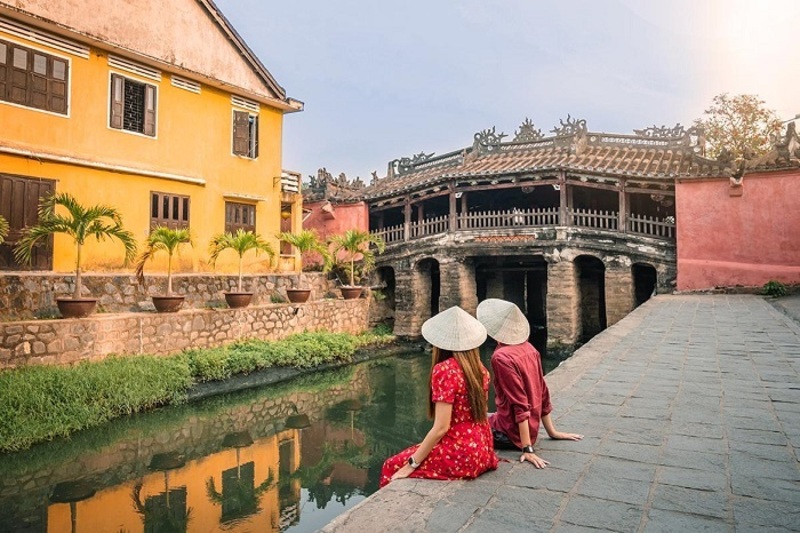
Enjoy Famous Dishes at Hoi An Night Market – Hoi An travel tips
Hoi An’s Night Market is a bustling hub of culinary delights, offering a wide range of local and regional specialties. Here are some must-try dishes:
- Cao Lau: This signature Hoi An dish features thick noodles, pork, greens, and a flavorful broth, making it a delectable treat.
- Banh Mi: Hoi An is famous for its delicious Banh Mi sandwiches, which are a fusion of French and Vietnamese flavors. Be sure to try one from a local street vendor for an authentic experience.
- White Rose Dumplings: These delicate dumplings, filled with shrimp or pork, are a specialty of Hoi An and a must-try for food enthusiasts.
- Com Ga (Chicken Rice): A simple yet flavorful dish, Com Ga features tender chicken served with fragrant rice and a side of herbs and dipping sauce.
The Night Market is also a great place to shop for souvenirs, handicrafts, and traditional lanterns to bring home as mementos of your trip to Hoi An.

Where to Go Near Hoi An Ancient Town?
While Hoi An’s Ancient Town is a treasure trove of cultural and historical attractions, there are also several beautiful destinations nearby that are worth exploring:
Tra Que Vegetable Village
Located just a few kilometers from Hoi An, Tra Que Vegetable Village is a peaceful oasis known for its organic farming practices and lush greenery.
- Take a leisurely bike ride through the village and admire the picturesque landscapes of vegetable fields and herb gardens.
- Participate in a hands-on farming experience, where you can learn about traditional Vietnamese agricultural techniques and even help plant or harvest crops.
- Enjoy a farm-to-table cooking class, where you can prepare and savor fresh dishes made with ingredients sourced directly from the village.
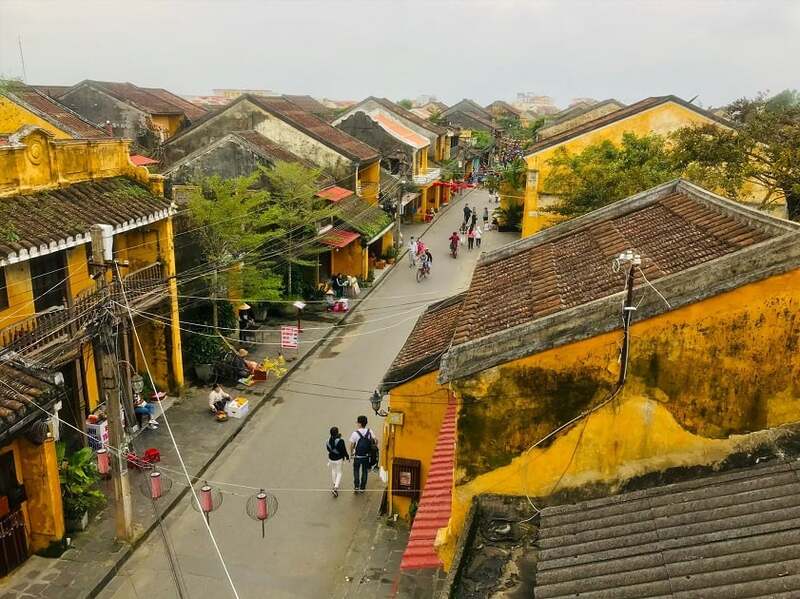
Cu Lao Cham
Cu Lao Cham is a group of islands located off the coast of Hoi An, known for their pristine beaches, crystal-clear waters, and vibrant marine life.
- Embark on a boat tour to Cu Lao Cham and spend the day snorkeling, swimming, and relaxing on the sandy shores of Bai Chong or Bai Ong Beach.
- Explore the island’s lush forests and hiking trails, which offer stunning panoramic views of the surrounding sea and coastline.
- Visit the Marine Protected Area to learn about conservation efforts and the diverse ecosystem of Cu Lao Cham’s waters.
An Bang Beach
For a relaxing beach getaway near Hoi An, head to An Bang Beach, a serene stretch of golden sand lined with coconut palms and beachfront cafes.
- Rent a sun lounger and unwind on the beach while soaking up the sun and enjoying the tranquil ambiance.
- Indulge in fresh seafood and refreshing drinks at one of the beachfront restaurants, where you can savor local specialties while gazing out at the sea.
- Try your hand at water sports like paddleboarding or windsurfing, or simply take a leisurely stroll along the shore and collect seashells.
Whether you’re seeking adventure, relaxation, or cultural immersion, these nearby destinations offer a diverse range of experiences to complement your visit to Hoi An.
Where to Stay When Traveling to Hoi An?
When planning your trip to Hoi An, you’ll find a variety of accommodation options to suit your preferences and budget. Here are some popular choices for where to stay in Hoi An:
- Luxury Resorts: Hoi An boasts several luxurious resorts and boutique hotels that offer top-notch amenities, spa services, and stunning views of the river or ocean. These properties provide a tranquil retreat for travelers seeking a pampering experience.
- Boutique Hotels: For a more intimate and personalized stay, consider booking a room at one of Hoi An’s charming boutique hotels. These accommodations often feature unique decor, attentive service, and a cozy ambiance that reflects the town’s historic charm.
- Homestays: To immerse yourself in the local culture and lifestyle, opt for a homestay experience in Hoi An. Stay with a welcoming host family, participate in daily activities, and enjoy home-cooked meals made with fresh ingredients.
- Budget Guesthouses: If you’re traveling on a budget, Hoi An offers numerous guesthouses and hostels that provide clean and comfortable rooms at affordable rates. These accommodations are ideal for backpackers and budget-conscious travelers looking for value and convenience.
- Airbnb Rentals: Another option for accommodation in Hoi An is to book a private room or entire home through Airbnb. This allows you to have a more independent stay and experience the town like a local, with the added comfort and amenities of a home away from home.
No matter where you choose to stay in Hoi An, you’ll be greeted with warm hospitality, picturesque surroundings, and easy access to the town’s attractions and amenities.
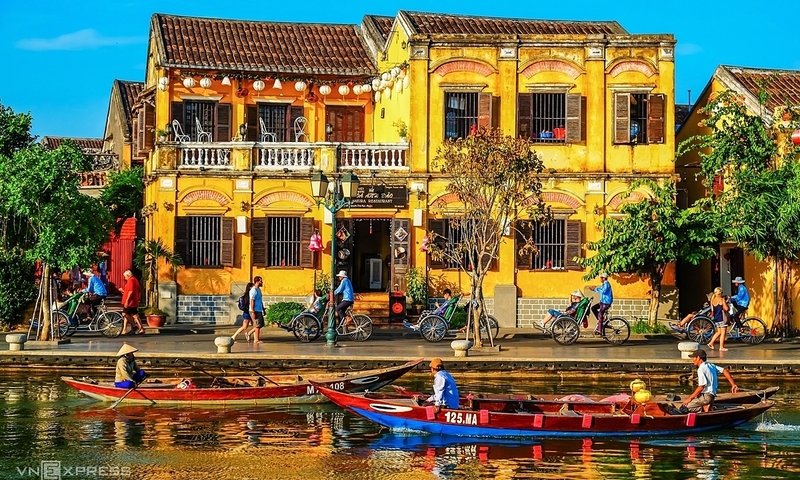
Conclusion
In conclusion, Hoi An, Vietnam, is a captivating destination that offers a blend of history, culture, and natural beauty. From exploring the ancient town’s architectural wonders to relaxing on pristine beaches and immersing yourself in local traditions, Hoi An travel tips has something to offer every traveler.
Vietnam Motorbike Tours, a leading tour operator with years of experience delivering unforgettable adventures, can make it happen. Imagine traveling by motorbike, trekking through breathtaking landscapes and camping under the stars. We provide the highest quality service to ensure your comfort and safety throughout the journey. Don’t miss out – register using the following link: https://vietnammotorbiketoursclub.com/
Contact us for more interesting information
- Address: 3/7/36 Duy Tan Street, Cau Giay District, Ha Noi City
- Mobile: +84 976 024 986
- Email: [email protected]
- Website: https://vietnammotorbiketoursclub.com/
RELATED POSTS

Visiting Vietnam In March 2025? Top 10 Hottest Destinations
March is an ideal time to travel, with pleasant weather and fresh air, leaving many wondering which destination to choose. If you are also looking...
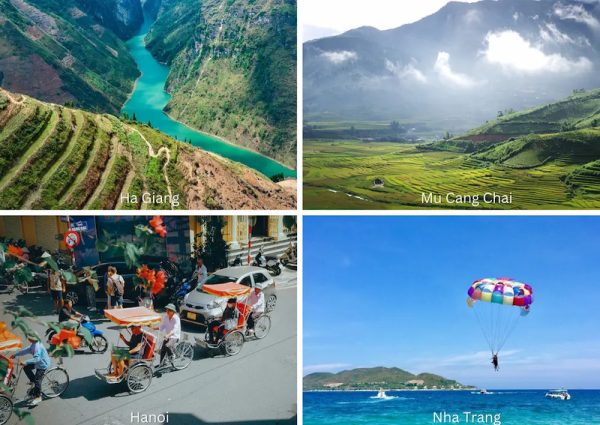
The Ultimate Guide to Visiting Vietnam In April 2025
April is a unique transitional period in Vietnam, bringing a pleasant atmosphere that is perfect for travel. It’s when the country blends the lingering coolness...

Ghenh Da Dia Phu Yen – A beautiful check-in location for tourists
Ghenh Da Dia Phu Yen – a unique natural wonder of Vietnam, where basalt rocks are stacked like giant honeycombs creating a magnificent picture in...




